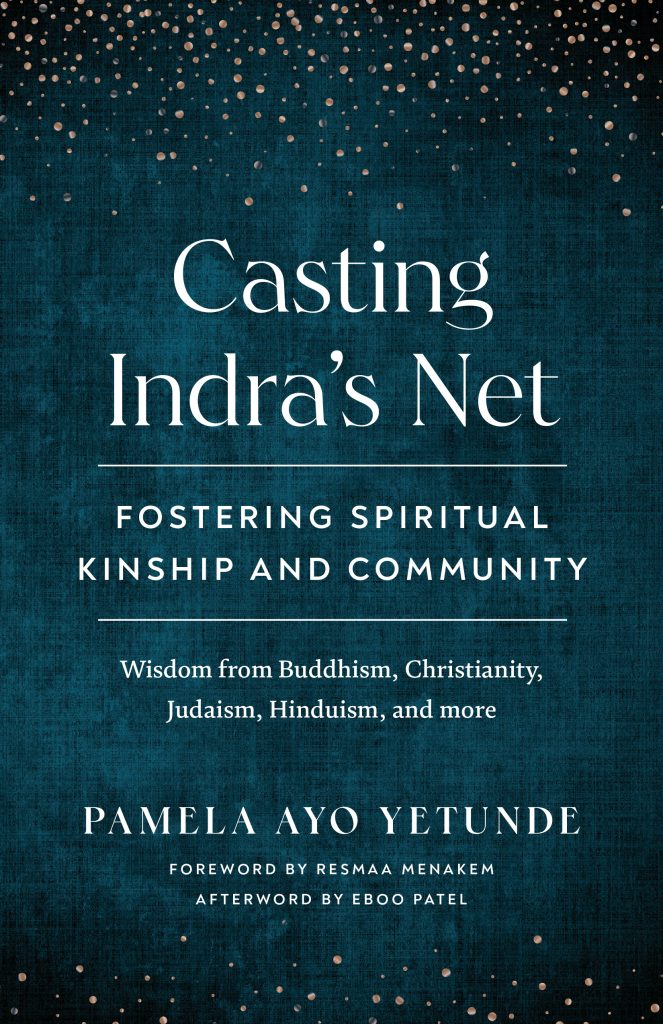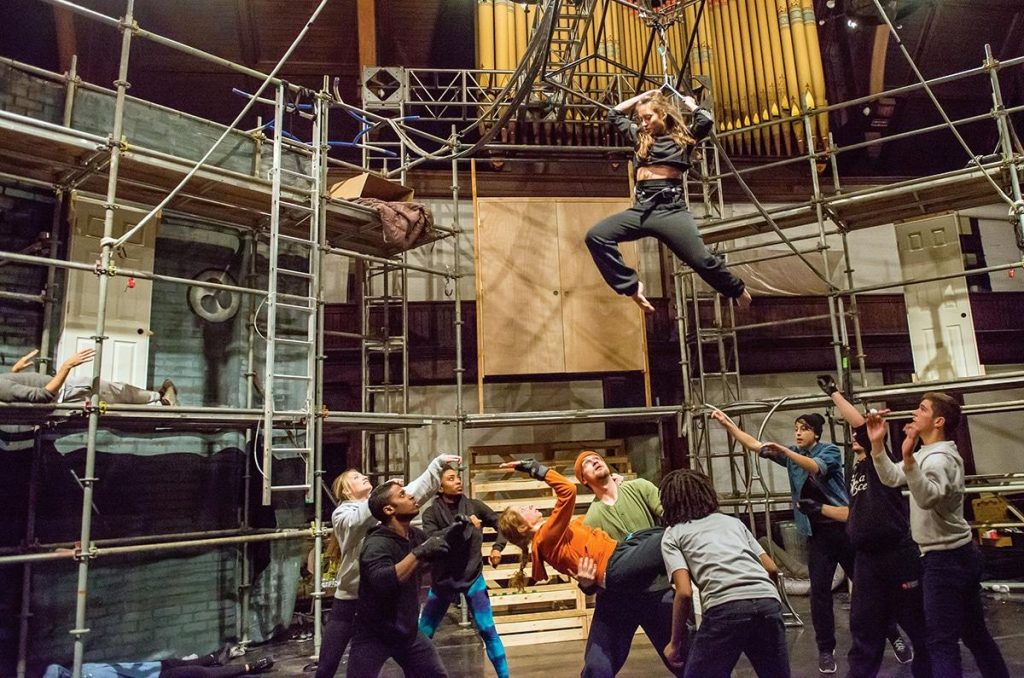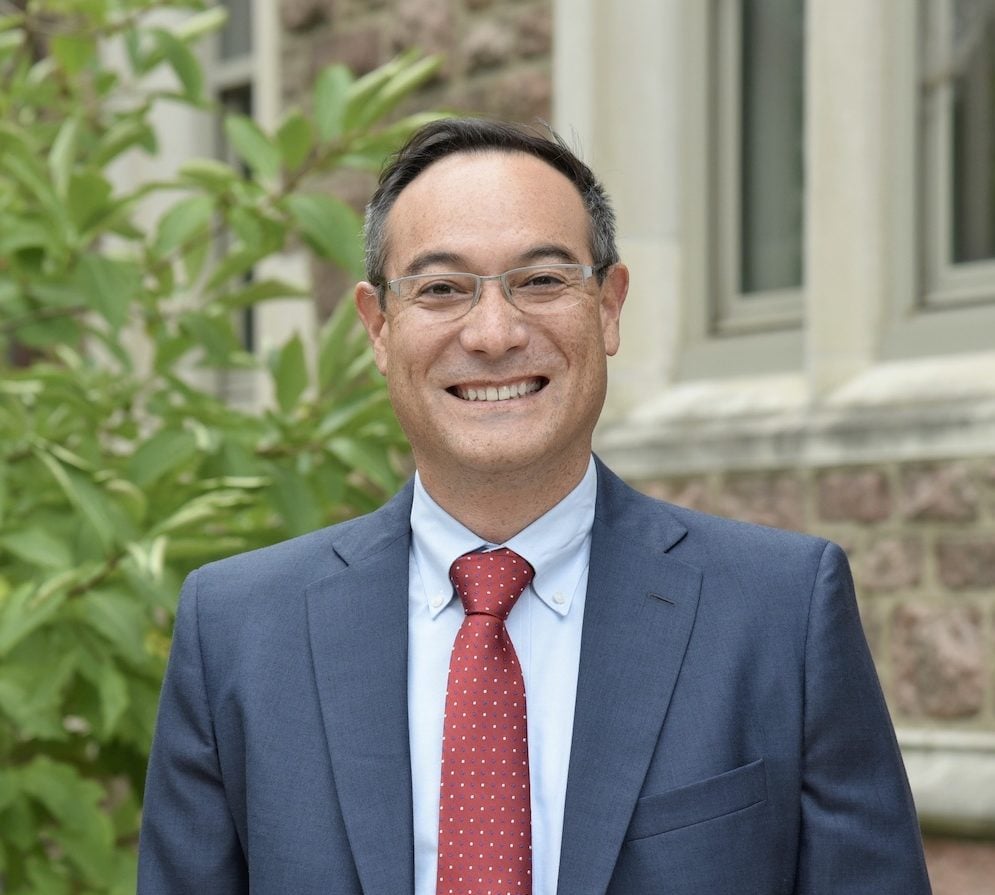Pamela Ayo Yetunde offers a heartfelt call for community-oriented models of well-being in our age of polarization and turmoil.
Creating compassionate communities takes more than good will—it requires a dedication to respecting cultural differences while remembering the fundamental spiritual kinship that exists between all people. Activist, counselor, and Buddhist teacher Ayo Yetunde creatively unpacks this condition through the metaphor of Indra’s Net—a universal net in which all beings reflect each other like jewels.
The following is an excerpt from Yetunde’s latest book, “Casting Indra’s Net: Fostering Spiritual Kinship and Community.”
Mohandas Karamchand Gandhi, also known as Mahatma Gandhi, was born in India to Indian parents in 1869. He was assassinated in 1948. An incredible journey of a life transpired between those dates.
As a child, Gandhi was deeply influenced by his mother’s devotional Hinduism and by the veneration of truth and love he found in stories from the Indian classics. His father served in the administration of the British Raj, and Gandhi, like many Indians of his time, thought of India as an important and respected part of the empire and of himself as a British subject. In his late teens and early twenties, he studied law in England and while there saw a different side of European colonial thought. After traveling to South Africa, then also a British colony, in 1893 to practice law, he experienced violent racial discrimination and began to question British colonialism more deeply. Remaining in South Africa until 1914, he went through a significant spiritual conversion, left the practice of law, became an activist and theologian, and led successful nonviolent anti-colonialist movements before returning to India to do the same.
I never grow tired of watching the feature film about Gandhi. After I learned about him, I was so thoroughly impressed by his life that I made my young daughter watch that movie with me every year as she was growing up. Why? I wanted her to know that social change for human rights is possible and that she could find a place in a movement at some point in her life when social change and her participation were needed.
When I learned that Gandhi considered the Bhagavad Gita, one of the thousands of holy scriptures of Hinduism, like his eternal mother, I had to read it. Then I had to read it again and again—it took me at least four times before I began to get it because it begins, shockingly, with the god Krishna telling his devotee Arjuna to murder Arjuna’s kinfolk! How could Gandhi—a man who sacrificed so much for the well-being of others in two countries, on two continents, and whose example inspired Rev. Dr. Martin Luther King Jr. and the civil rights movement of the 1960s in the United States—embrace a murderous text like this? I had forgotten at the time that I already knew something, through music, about the love of Krishna and his devotees.
In the 1970s, when I was young and of the record-album-buying age, I bought my first two albums at a garage sale. One was by the Russian composer Sergei Rachmaninoff, which I purchased not because I loved classical music but because I thought he had an interesting face. The other was the Hair soundtrack, which I bought because I had a big afro, like the afro on the cover. Little did I know the album would influence me to respect and appreciate Krishna worship. Before purchasing these albums, I had been unintentionally and subliminally “indoctrinated” by my aunt into my own eternal mother: Earth, Wind, and Fire (EWF). My aunt, like my mother, was adopted, and she is just five years older than I am. She told me she first encountered EWF when she was sixteen or seventeen, which means that by age eleven or twelve I was absorbing their songs by osmosis and singing them myself not long after. Their 1973 album Head to the Sky includes “Keep Your Head to the Sky,” their 1974 album Open Our Eyes includes “Devotion,” their 1975 album That’s the Way of the World includes the megahits “Shining Star” and “Reasons,” and their many albums thereafter provided and still provide the main spiritual soundtrack of my life. Lyrics such as this one— “You’re a shining star / No matter who you are”—sank deep into my mind and heart like mantras. Thus, it was EWF that prepared me to absorb the hippy Broadway soundtrack Hair, including its song devoted to Krishna.
I played Hair on my little portable turntable so many times one would think I’d have worn the vinyl grooves down to the point where no music was left. I played that album with a kind of religious devotion, as if it was my personal anthem and path to salvation, even though I didn’t understand everything (if anything really) that soundtrack was about. What I understood, though, was that I loved listening and singing to the song “Be In—Hare Krishna.” So, in my youth I sang and chanted as the grooves wore down:
Hare Krishna Hare Krishna
Krishna Krishna Hare Hare
Hare Rama Hare Rama
Rama Rama Hare Hare . . .
And there was another song in the atmosphere and my consciousness about being devoted to Krishna. I didn’t understand it then either. The late former Beatle George Harrison wrote and recorded “My Sweet Lord” in 1970. I don’t remember the year or my age when I first heard and sang this song, but the chorus includes Harrison singing to Krishna as his “sweet lord.”
What if I had remembered these songs before reading the Gita? If I had remembered, I’m sure my first and subsequent readings would have been less disturbing because I would have remembered my own singing and chanting Hare Krishna even as I was being raised in the United Methodist Church. Given the electricity and love I felt in my body as I sang those songs, I could have intimated that there must be a deeper spiritual meaning to the exchange between Krishna and Arjuna. As it was though, I found the story troubling. The dialogue between Krishna and Arjuna takes place in the middle of a battlefield, with an army on each side poised to fight. Stephen Mitchell translates the scene this way:
Arjuna saw them standing there: fathers, grandfathers, teachers,
uncles, brothers, sons, grandsons, fathers-in-law, and friends,
kinsmen on both sides, each side arrayed against the other.
In despair, overwhelmed with pity, he said: “As I see my own
kinsmen, gathered here, eager to fight, my legs weaken, my
mouth dries, my body trembles, my hair stands on end, my
skin burns, the bow Gandiva drops from my hand. I am beside
myself, my mind reels. I see evil omens. Krishna: no good can
come from killing my own kinsmen in battle.”
Arjuna laments the probability of mass violence toward innocent people and the violence he is being called to commit against his kin. Krishna responds: “Why this timidity, Arjuna, at a time of crisis? It is unworthy of a noble mind: it is shameful and does not lead to heaven. This cowardice is beneath you, Arjuna: do not give in to it. Shake off your weakness. Stand up now like a man.”
I was shocked! How could this book be Gandhi’s eternal mother? How could a God who, according to Gandhi, inspired decolonizing liberation also be a God of mobbery? Come again?! I recall having a similar response when I decided to read the Bible from cover to cover, book to book. I was exposed to so much violence that I had to put it down. Many commentators have said that the armies and killing in the Gita are used allegorically, and perhaps that is true. But I find it helpful as well to consider Arjuna as an actual person and consider his situation. What I didn’t understand, and still seek to understand more deeply, is that Arjuna, the potential mass murderer of his kin, was caught between warring factions, and his morality, devotion, and spiritual life were being put to the test. I think Krishna was testing Arjuna similarly to how God tested Job. These characters are really being tested by the many difficult and often violent challenges in life—challenges we face in real life today as well. Their pursuit of truth and goodness, represented by their desire to be at one with their gods, ultimately leads them out of self-destruction and mobbery.
One of the ways their gods lead them out of destruction is through koans that are initially quite confusing. In this sense, the Gita’s teaching is what I call a long-form koan. Rather than a pithy exchange or story, it presents an epic scene in which paradox is employed to teach an already moral person about the nature of God and how to live in divine accord. The Book of Job is also a long-form koan about teaching an already moral and devoted man, Job, about the nature of God, in that case through cruelly and traumatically depriving him of nearly everyone and everything he loved. The Gita’s teaching, like the Sermon on the Mount in the Bible, is a dialectic—pitting opposites against one another to arrive at the truth. Typically, it requires patience and curiosity, especially for people conditioned by strict either-or thinking, before becoming more comfortable with the discomfort that tends to arise when deriving meaning from such challenging stories.
The Gita’s teaching is ultimately about how to continue on the path of yoga, wisdom, compassion, and Self-actualization (union with divine substance). Arjuna, through his conversations with Krishna, goes from profound sorrow to bliss. His merger with God is the real “war” being “fought.” In the end, the conversation about the mass killing of kinfolk disappears. No physical battle takes place in this version of the Gita, and I take this to mean that one cannot simultaneously be about Self-actualization on the one hand and mobbery and mass murder on the other. Krishna says to Arjuna:
I am imperishable time . . . the courage of all brave men:
of the Vrishi clan, I am Krishna;
of Pandavas, I am Arjuna
Krishna thus affirms his oneness with Arjuna. Imagine you are Arjuna, who has had a long conversation with Krishna about why you don’t want to kill others, while Krishna repeatedly encourages you to kill. Then you get to a point in the conversation where Krishna reveals himself to be divine and says he is you! With an open heart, devoted to this creative and all-pervading mystery, your sense of self might change radically. True freedom comes from renouncing violence.
When I was a youth in the United Methodist Church, I once asked my pastor, the late Rev. Jerry Hyde, what he wanted me to call him. Did he want me to call him Jerry, as the adults addressed him, or Rev. Hyde, as I was taught to respectfully address adults? He told me Rev. meant “revered” and that God revered all people, so I was as revered by God as he was, therefore I could call him Jerry. I never called him Jerry, but what he said made a deep impression on me. The lesson he imparted to me in my youth was that we were no different in the cosmos, though there were many obvious differences in age, race, sex, gender, experience, roles, and so on. Fortunately, Rev. Hyde used his pastoral authority in a way that radically and immediately altered my sense of self and possibility. What a profound and miraculous gift! I know he didn’t realize at the time how enduring his teaching was, but it saved me, ironically, when Rev. Hyde himself tried to intervene in the expression of my sexual orientation.
In 1992, twenty-three years before gay marriage was legal throughout the United States, Rev. Hyde reached out to me to advise me against the “gay lifestyle.” I know that he was under religious pressure and had been called by one of my relatives to save me from myself. In short, he tried to keep me in a heteronormative caste system. His weapon was shame. Eventually, as the marriage equality movement took hold, Rev. Hyde reached out to me of his own volition. He told me that he had felt sorry for many years for having attempted to persuade me to be someone I was not. He said he had learned over the years that I was still revered, and he apologized and asked for forgiveness. Of course, I forgave him immediately because despite his intrusion and shaming, for which I was angry in that moment, he had given me the greatest gift decades earlier—he had told me that we are all revered.
For Rev. Hyde to impart to me that I, even as a pre-teen, was revered by God as much as a pastor is like Krishna saying to Arjuna that they are one. Krishna further shares that their interpenetrating being supports the entire cosmos with just one fragment of its Self. Can we support the entire cosmos with one fragment of ourselves?
From “Casting Indra’s Net: Fostering Spiritual Kinship and Community” by Pamela Ayo Yetunde © 2023. Reprinted in arrangement with Shambhala Publications, Inc. Boulder, CO.
Pamela Ayo Yetunde, JD, MA, ThD, is a pastoral counselor, spiritual director, chaplain, and Community Dharma Leader in the Insight Meditation community. She is coeditor of the Nautilus Gold Award-winning Black and Buddhist: What Buddhism Can Teach Us About Race, Resilience, Transformation, and Freedom (Shambhala Publications, 2020); author of Object Relations, Buddhism, and Relationality in Womanist Practical Theology (Palgrave Macmillan, 2018) and the Frederick J. Streng Award-winning Buddhist-Christian Dialogue, U.S. Law, and Womanist Theology for Transgender Spiritual Care (Palgrave Macmillan, 2020); and editor of the Theology of Prince Journal (United Theological Seminary of the Twin Cities, 2018). Ayo is an associate editor with Lion’s Roar magazine. Ayo is cofounder of Center of the Heart and Buddhist Justice Reporter. Ayo has been featured on NBC.com, The Tamron Hall Show, and Sisters from AARP. She is the recipient of the Outstanding Women in Buddhism Award by the International Women’s Meditation Center Foundation. Ayo’s next project is a contemporary rendering of an ancient Buddhist story through story, theater, and film. Pamela Ayo Yetunde can be reached at ayoyetunde.com.





